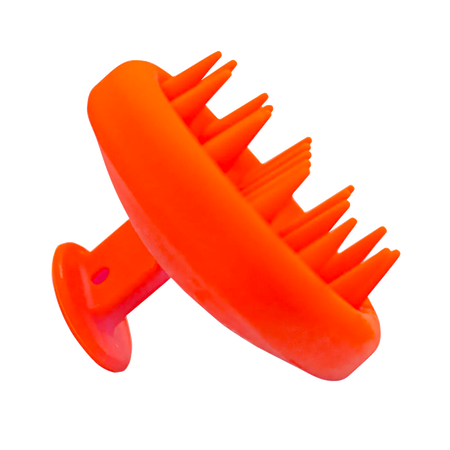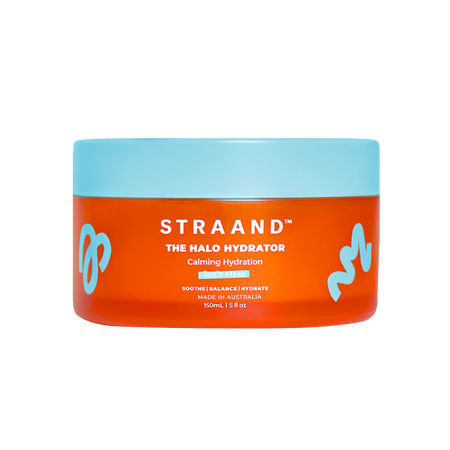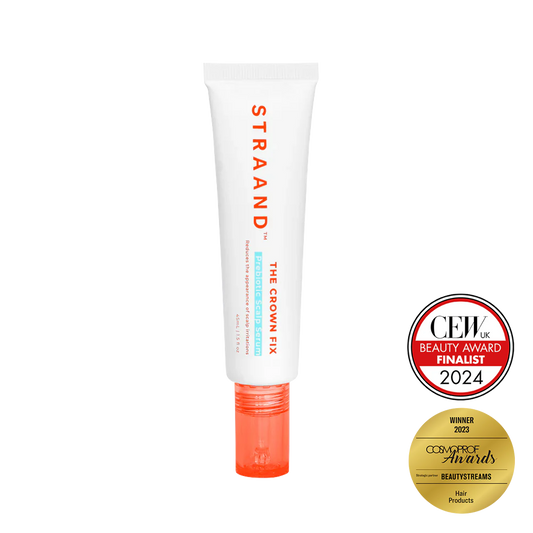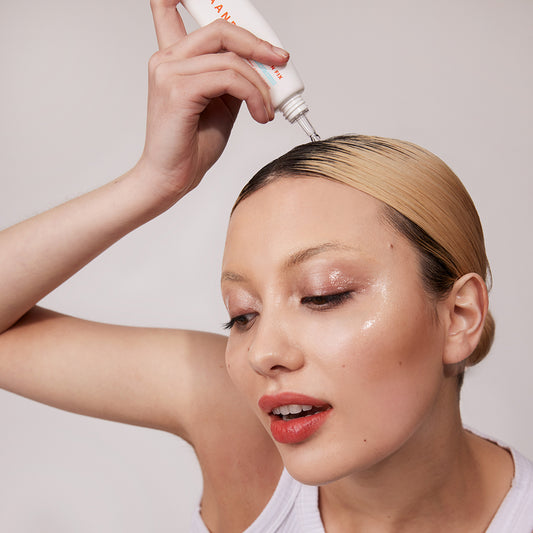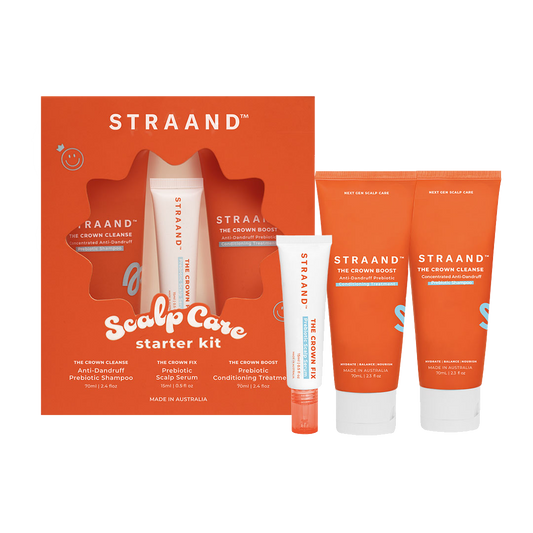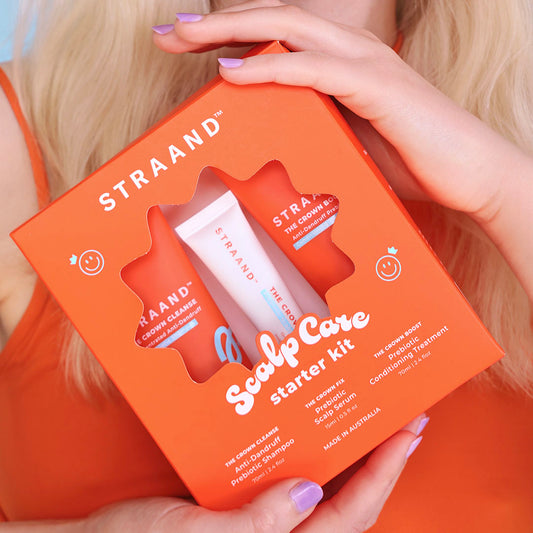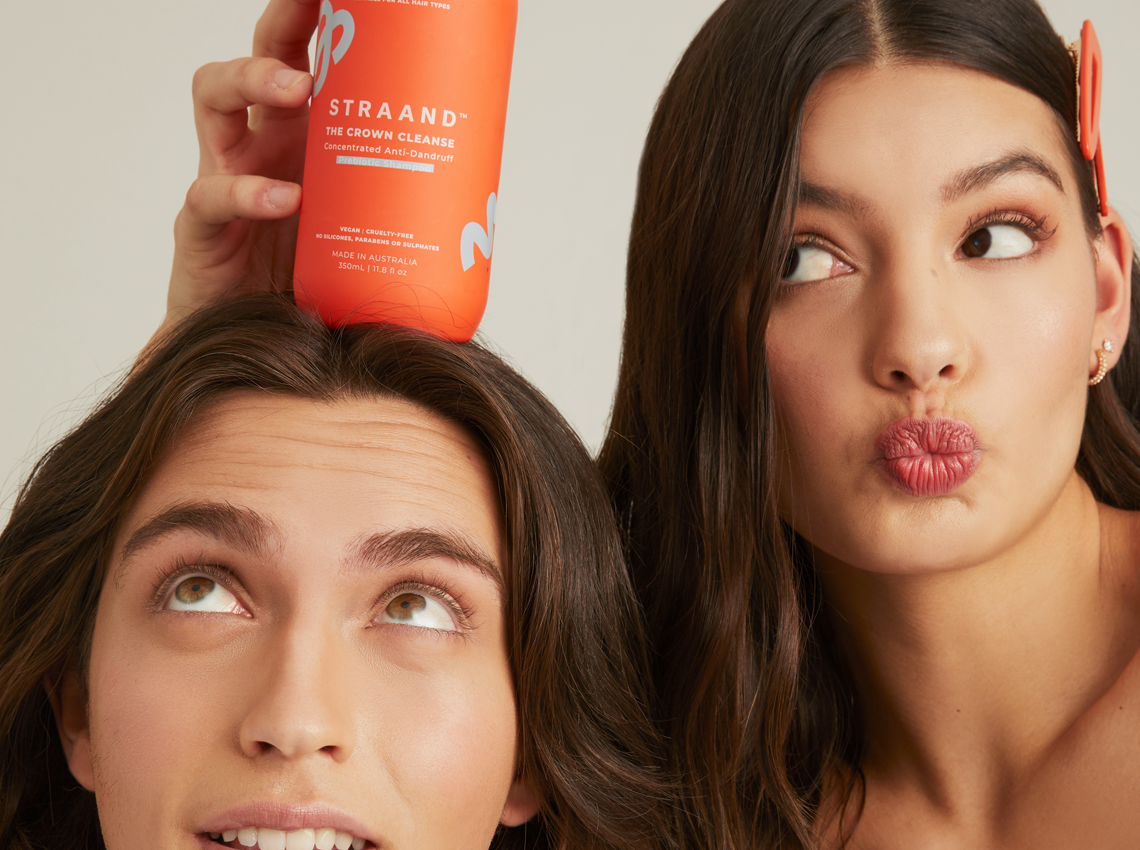Can Wearing A Hat Actually Give You Dandruff?
Let’s be honest — most of us don’t think about our scalps at all until something’s going wrong. One day, you’re suddenly noticing how itchy and uncomfortable your scalp feels and your scalp’s in crisis mode. If you have dandruff, welcome to the club. It’s a pretty big club, around 50% of the population experience it too. And have you ever wondered… Does wearing a hat give you dandruff? The short answer: while your beloved berets and caps cannot directly cause dandruff, they can worsen the situation. Let’s break down all things dandruff and other scalp-care tips to keep your dandruff at bay.
What Is Dandruff?
Dandruff appears when the skin on the scalp begins to flake. Symptoms of dandruff include:
- Itchiness
- White flakes in the hair
- Red and irritated scalp
- Greasy or dry scales on the scalp
- Yellowish or red scaly bumps along the hairline (only seen in severe cases)

Causes Of Dandruff
There are a number of factors and health conditions that can cause dandruff. Let’s take a look at the main ones below.
Seborrheic Dermatitis
Seborrheic dermatitis (SD) is a chronic form of eczema that affects areas of the body that are particularly rich in sebaceous (oil-producing) glands. These areas include the scalp, face, and trunk.
Dandruff is an uninflamed type of SD that appears on the scalp. In other words, dandruff and SD are actually just two versions of the same condition that fall on different ends of the spectrum of the same condition (SD being more severe, dandruff being milder).
Malassezia Sensitivity
Malassezia globosa is the main microbe that causes dandruff. Malassezia lives on our scalps and consumes the natural oils produced there.
Unfortunately, some bodies become irritated when Malassezia breaks down these oils, so the scalp increases the pace at which it sheds old skin cells (causing dandruff) and generates new ones. To put this in context — for people without dandruff, it takes about a month for the skin cells on the scalp to age, die, and shed. For people with dandruff, this process occurs every 2-7 days.
Oily Skin
Excess oil increases the risk of developing SD and dandruff, which is why people with oily skin types are prone to these conditions.
Dry Skin
If you are prone to dry skin, particularly during cool winter months, this may be the cause of your dandruff. If your dandruff is caused by dry skin rather than SD, the flakes your scalp sheds will feel dry instead of oily.
Contact Dermatitis
This condition occurs when the skin becomes irritated due to an allergen or external agents, such as hair products and dyes. Contact dermatitis often presents with an itchy and occasionally painful rash. When that reaction occurs on the scalp, it can cause dandruff.
Washing Your Hair Irregularly
If you leave too long in between hair washes, oils can build up on your scalp and worsen your dandruff.
Other Factors
Dandruff usually first appears in young adulthood and continues through to middle age, though the condition can stay with you for life. Research has shown that men are more susceptible to dandruff than women, suggesting that SD and dandruff may be linked to androgen hormones.
Other health concerns may also increase your risk of dandruff. Skin conditions such as rosacea, eczema, and psoriasis can lead to or worsen dandruff symptoms. Illnesses that weaken the immune system or impair neurological function— such as HIV and Parkinson's disease — have also been identified as risk factors.
So…Does Wearing A Hat Cause Dandruff?

In short,your hats can’t cause dandruff. However, wearing a hat can worsen your symptoms.
Keeping a hat on for a long period of time traps moisture and promotes a warm, humid microclimate. Malassezia thrives in a humid environment, so your hat may be to blame for those dandruff flare-ups.
How To Reduce Dandruff
There are a few steps you can take to alleviate your symptoms.
Give Your Scalp Time To Breathe
Where you can, avoid wearing hats all day, every day. Go hat-free for a portion of the day and give your scalp some air. This will help to prevent moisture from building up on your scalp.
Increase Frequency Of Hair Washing
If you currently wash your hair infrequently, try washing your hair every day with a gentle shampoo like our Crown Cleanse. This will help to clear the scalp of oils and prevent moisture from gathering on your scalp, which can worsen symptoms.
Go For An Anti-Dandruff Shampoo
Opt for an anti-dandruff, scalp-protecting shampoo AKA our Crown Cleanse. Many hair care products work only to strengthen the fibres within the hair but pay little attention to scalp health, so let us help you with that
The latest research into scaly scalps has shown that nurturing certain bacteria on the skin helps to keep dandruff at bay. The scalp hosts an eco-system of fungi and bacteria that feed on the oils produced by the skin, otherwise known as sebum. Keeping the scalp biome in balance is vital for a healthy scalp. Propionibacterium and Staphylococcus are two of the most important bacteria for scalp health. Dandruff sufferers often lack Propionibacterium. This bacteria is found in probiotics, so nourishing the scalp with probiotics can help to restore this balance.
Our Crown Cleanse contains the prebiotics needed to rebalance your scalp biome and reduce the symptoms of dandruff. It’s also vegan, cruelty-free, and Aussie-made. The formula prevents scalp irritation, doesn’t contain silicones, sulphates, or parabens.
Limit The Use Of Hair Products
Avoid excessive use of hair oils and treatments, especially if you wash your hair infrequently. Overuse will lead to product build-up on the hair and scalp, leading to an oilier environment.
Reduce Stress
Stress can impact your immune system and make you more susceptible to dandruff-causing conditions. Stress can also worsen your symptoms if you are already prone to dandruff, so be sure to implement relaxation strategies such as gentle exercise, journaling, and a good sleep routine.
We’re all about keeping those flakes away by giving our scalps the love they deserve. Explore our range of scalp and hair care products.

Is Wearing a Hat Everyday Bad For Your Scalp?
Wearing a hat is a common practice for many people, whether it be a fashion statement, comfort, or protection from the weather. However, some have raised concerns about whether wearing a hat every day is bad for your hair. The truth is, wearing a hat every day can have some negative effects on your hair and scalp.
First, wearing a hat every day can cause your scalp to sweat, which can lead to irritation and even fungal infections. This can cause dandruff and other scalp conditions, which can ultimately affect the health of your hair. Additionally, wearing a hat every day can cause your hair to become flat and lifeless, as it can compress your hair against your scalp.
However, this does not mean that wearing a hat every day is always bad for your hair. If you take the proper precautions and choose the right type of hat, you can minimize the negative effects. For example, choosing a hat made of breathable material and ensuring it fits properly can help reduce scalp irritation and prevent flat hair. Additionally, taking breaks from wearing a hat every day can also help prevent scalp irritation and allow your hair to breathe.
In summary, wearing a hat every day can have negative effects on your hair and scalp, but it ultimately depends on the type of hat you wear and how you care for your hair. By choosing the right hat and taking the proper precautions, you can wear a hat every day without causing significant damage to your hair.



